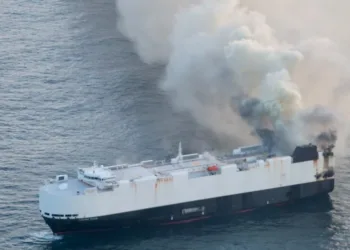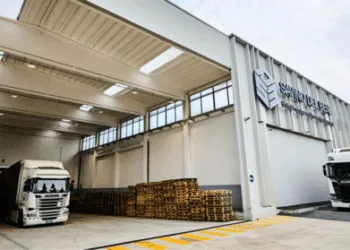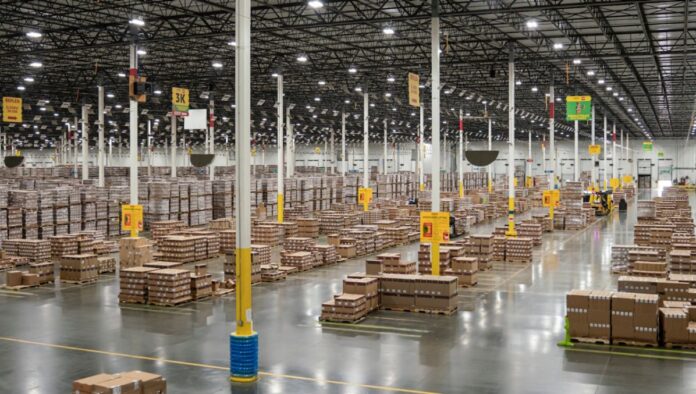The proposed Union Pacific-Norfolk Southern merger leaves three major intermodal customers — J.B. Hunt, Schneider, and STG Logistics — in the awkward position of having their tents pitched in the wrong railroad camps.
J.B. Hunt, the largest domestic truckload intermodal operator, uses BNSF Railway in the west and relies primarily on Norfolk Southern (NYSE: NSC) in the east. Containers for third-ranked Schneider and number four STG Logistics ride Union Pacific (NYSE: UNP) and CSX (NASDAQ: CSX) trains.
This leaves the companies unable to tap the benefits of coast-to-coast single-line service should the merger receive regulatory approval. Rival and second-place Hub Group (NASDAQ: HUB) sits in the sweetspot, using UP and NS.
Intermodal analyst Larry Gross is among the industry observers who believe that J.B. Hunt ( NASDAQ: JBHT), Schneider (NYSE: SNDR), and STG ultimately will swap rail partners in the east. “I see it as inevitable because the one theoretical advantage of this merger is single-line haul,” Gross said.
J.B. Hunt and BNSF have a permanent partnership, which means that its option for single-line service would be to jump to CSX. CSX already handles some J.B. Hunt traffic, generally in lanes that are not served by NS.
Schneider, meanwhile, left BNSF for UP in 2023 and would be unlikely to return to BNSF, where it did not like playing second fiddle to J.B. Hunt. So it’s expected to shift to Norfolk Southern.
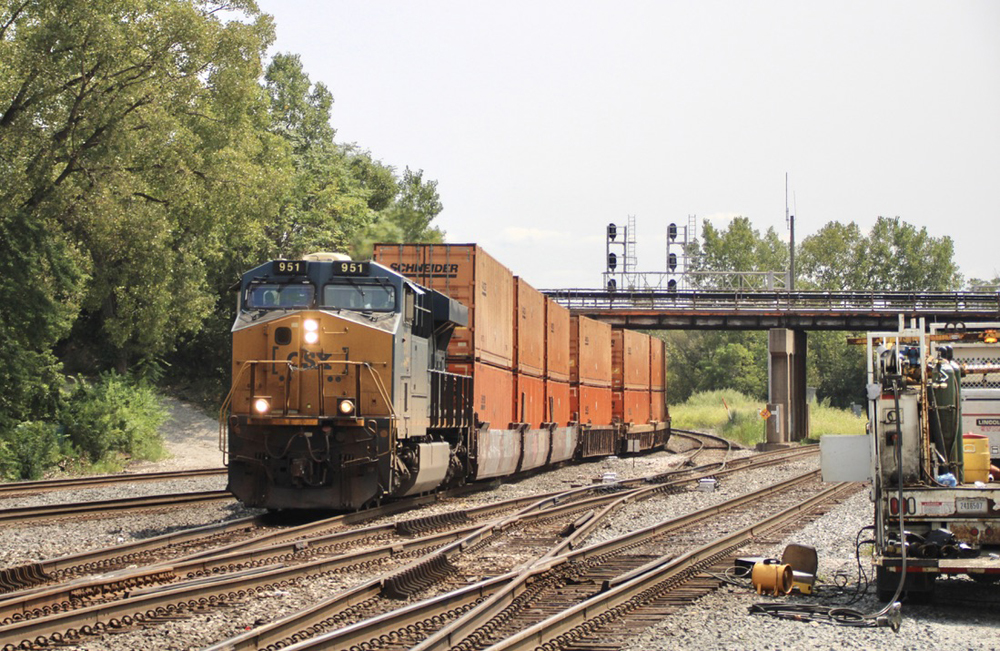 A westbound CSX intermodal train carrying Schneider containers crosses under a bridge for Metra’s Rock Island District at Blue Island, Ill., on Aug. 21, 2024. (Photo: Trains/David Lassen)
A westbound CSX intermodal train carrying Schneider containers crosses under a bridge for Metra’s Rock Island District at Blue Island, Ill., on Aug. 21, 2024. (Photo: Trains/David Lassen)
Given the exclusive J.B. Hunt-BNSF relationship and higher intermodal volume in the west, it’s also likely that STG would shift carriers in the east, trading CSX for NS.
“It’s not like there’s a necessity — a requirement — that they shift, but I think it just probably makes sense,” Gross said. “But these things are not easy. We’re talking major dislocation here.”
Schneider executives, speaking on the company’s earnings call Thursday, said they are still weighing the potential impacts of Tuesday’s UP-NS merger announcement.
“We’re pro-competition and we’re pro-customer, and to the degree that any of this helps us achieve those, then that’s kind of where we’ll come down,” Chief Executive Mark Rourke said. “We don’t have enough information at this time to take an official position.”
J.B. Hunt declined to comment. STG representatives did not immediately respond to a request for comment.
“I would expect the long-term relationship BNSF and J.B. Hunt have maintained to carry over into any potential merged environment involving BNSF,” a former Class I railroad chief operating officer said. “BNSF has continued to demonstrate a willingness to invest in intermodal capacity for growth and I would expect BNSF to invest in markets of demand beyond current capabilities.”
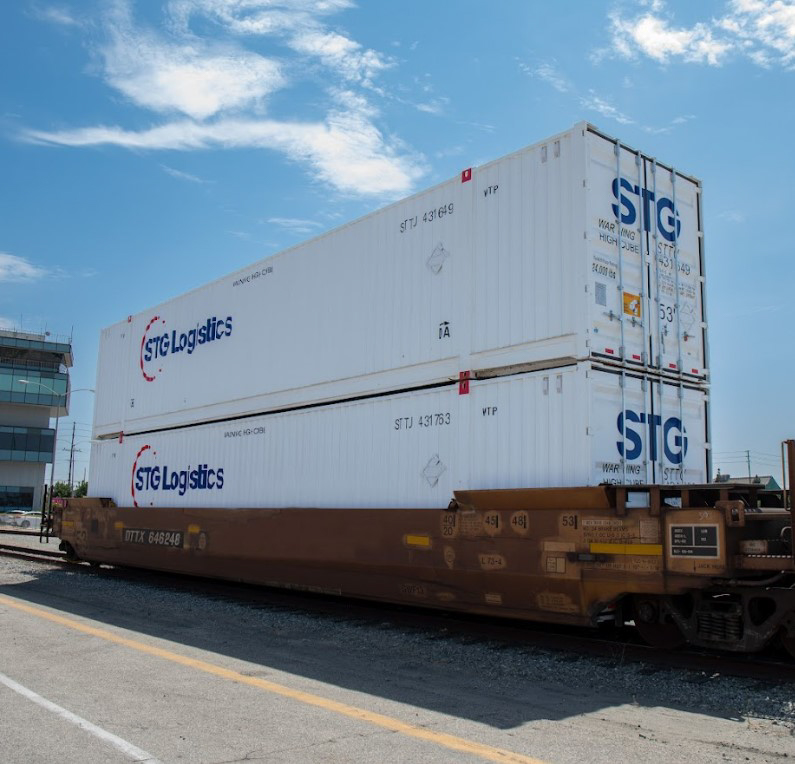 STG Logistics, which has the fourth-largest domestic container fleet among intermodal marketing companies, uses Union Pacific in the west and CSX in the east. (Photo: STG)
STG Logistics, which has the fourth-largest domestic container fleet among intermodal marketing companies, uses Union Pacific in the west and CSX in the east. (Photo: STG)
Hub Group, in a statement released with its financial results late Thursday, said it backs the UP-NS merger.
“The announced transaction would further accelerate our long-term growth opportunity,” Hub said. “Specifically, a transcontinental network removes friction in gateways, reduces transit times, provides access to new markets, and increases competition with truck volume through new single-line service.”
About 30% of Hub’s intermodal business is transcontinental.
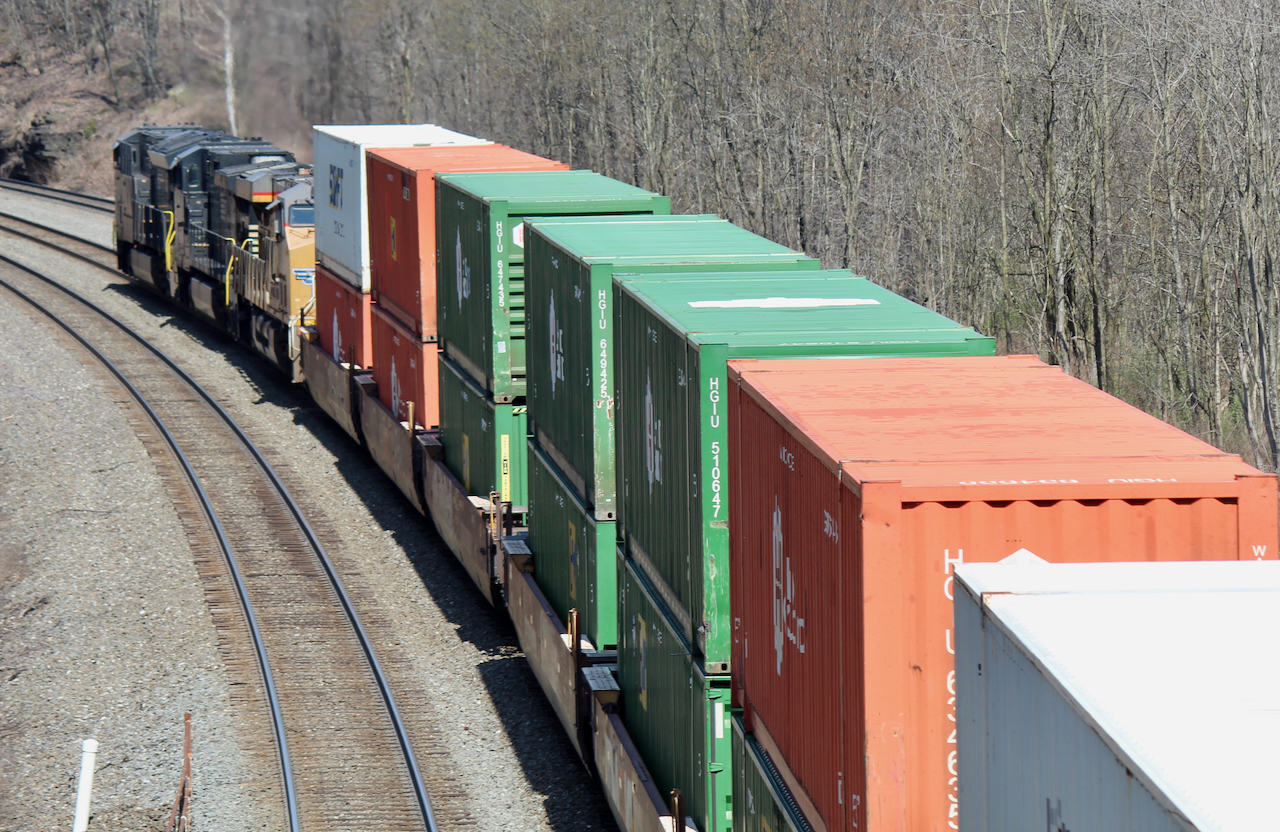 An eastbound Norfolk Southern stack train with a Union Pacific locomotive in the consist rolls through Cassandra, Pa., in April 2022. Hub Group’s green boxes are among those on board. (Photo: Trains/Bill Stephens)
An eastbound Norfolk Southern stack train with a Union Pacific locomotive in the consist rolls through Cassandra, Pa., in April 2022. Hub Group’s green boxes are among those on board. (Photo: Trains/Bill Stephens)
UP CEO Jim Vena and NS CEO Mark George, speaking to the trade media on Tuesday, said they want to retain their existing intermodal customers.
“We want customers to have more choice. We want them to win. We want them to stay with us, whoever’s with us, and we want to grow with them,” Vena says. “And the best railroad, the best companies win.”
George echoed those sentiments.
“We love Hunt as a customer. We want to retain Hunt. We want to grow Hunt … We don’t know anything about their agreements with BNSF, but there’s just room to grow for all of those partners,” George said.
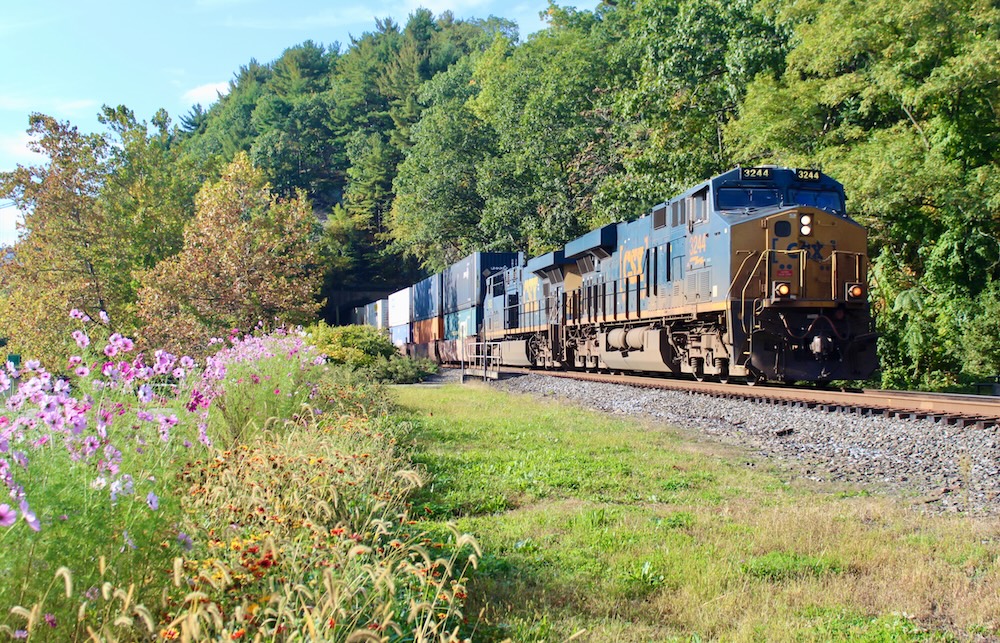 With a UMAX container on the first well car, a CSX intermodal train cruises north along the River Subdivision in the Hudson Valley of New York in October 2021. (Photo: Trains/Bill Stephens)
With a UMAX container on the first well car, a CSX intermodal train cruises north along the River Subdivision in the Hudson Valley of New York in October 2021. (Photo: Trains/Bill Stephens)
Another domestic intermodal wrinkle from the proposed merger: The UP-CSX UMAX joint container pool is unlikely to survive. “That’s definitely going to go away,” Gross said.
And that means that intermodal marketing companies that don’t have their own container fleets will lose a competitive option, said Gross.
If CSX ultimately merges with BNSF, it would potentially further reduce options for non-asset IMCs. BNSF is a BYOB railroad — as in bring your own box — while CSX Intermodal has its own fleet along with the UMAX containers. “If CSX ends up with BNSF, then I think CSX probably is out of the equipment provision business,” Gross said.
Rick LaGore, CEO of InTek Intermodal Logistics, says it’s too early to determine how a UP-NS merger would affect non-asset IMCs.
“At first glance, I see more upside on the carload side of the business. Intermodal is a bit messier due to existing alliances, shared assets, and the various railroads that asset IMCs rely on,” LaGore said.
As for the big truckload intermodal players, LaGore said “it’s not a given that STG or Schneider will have to make major moves, although for price and service reasons it will probably make sense over time.”
J.B. Hunt will have to make a decision sooner rather than later, LaGore contended, because UP will have visibility into J.B. Hunt’s business with NS as it works through the financials of the merger.
Intermodal marketing companies likely will want to keep their competitive options open despite the benefits of the larger single-line network a UP-NS combination would offer.
“On the partnership side, I still believe there will be handoffs within the UP–NS network that shippers and IMCs will want to maintain. In some markets, walking away from certain switches would make intermodal less competitive due to additional drayage,” LaGore said. “These connections may not be as smooth as within the merged network, but they’ll remain necessary because they work. And as long as price and service are there, shippers will expect them, and railroads will want the revenue.”
Ultimately, a transcon merger would lead to growth that would require an expansion of domestic container fleets.
“if business growth materializes, partnerships and boxes could proliferate throughout the network and no one will talk about the current box sharing programs. The bigger questions, for me anyway, are: Where do additional boxes come from and how they’re positioned to support demand is first in my mind. Who owns what pool is a secondary question,” LaGore said. “Who knows, maybe InTek starts owning boxes. All said, the box story will be written if intermodal were to double because of the merger. Personally, I’m skeptical that operational efficiencies alone will trigger that level of growth as I see more immediate benefits coming on the carload side.”
Subscribe to FreightWaves’ Rail e-newsletter and get the latest insights on rail freight right in your inbox.
Related coverage:
Hub Group is fully behind a potential UP-NS transcontinental railroad creation
Report: CSX talks with investment bank about merger options
Rail deal will open new markets for top US container port
Activist investor may target CSX, citing slumping financial performance
The post UP-NS merger puts intermodal giants on the wrong side of the map appeared first on FreightWaves.




